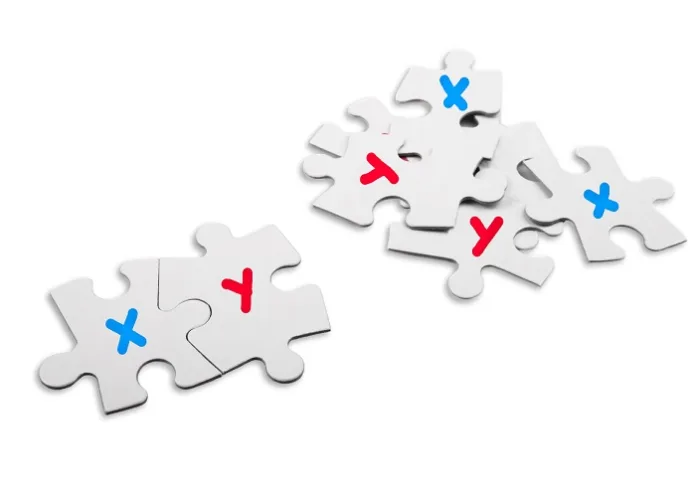The male sex chromosome has finally been decoded in a breakthrough that will help illuminate why some men are afflicted with certain conditions – and provide new hope for future treatments.
While women carry XX sex chromosomes, men have XY, with mutations in the Y chromosome thought to be driving male-specific conditions such as developmental problems, infertility and cancer.
But although the human genome sequence was completed in 2003, there were huge gaps left in the Y chromosome because it was full of complex repetitions of DNA that were hard to decipher.
It has taken a team of more than 100 researchers from around the world to fully decipher the elusive genetic code, harnessing recent advances in genetic technology and algorithms that can sift through big data.
Experts said that much of the new uncoded sections is satellite DNA that “makes a beautiful quilt-like pattern”, reports The Telegraph.
Dylan Taylor, co-first author and a Johns Hopkins University geneticist, said: “Now that we have this 100% complete sequence of the Y chromosome, we can identify and explore numerous genetic variations – that could be affecting human traits and disease – in a way we weren’t able to do before.”
Y chromosome mystery
The Y chromosome plays a crucial role in determining male sex, as well as coding for important functions, like the production of sperm.
When researchers completed the first human genome sequence 20 years ago, gaps were left in the sequences of all 24 chromosomes.
However, unlike the small gaps sprinkled across the rest of the genome sequence – which were finally filled in last year – more than half of the Y chromosome’s sequence remained a mystery, causing major headaches for scientists.
Assembling sequencing data into their correct order is akin to piecing together the plot of a long book where all the sentences have been cut into strips.
If all of the sentences are unique it is easier to determine the case of the Y chromosome, but sections of its DNA text were repeated so often it was impossible to find where they should go.
Puzzling
The missing chunks of the Y chromosome have made it difficult to understand what mutations and variations are driving disease because there is no complete reference from which to start.
“Just a few years ago, half of the human Y chromosome was missing [from the reference],” said Monika Cechova, co-lead author on the paper – which was published in Nature – and postdoctoral scholar in biomolecular engineering at the University of California.
“Back then we didn’t even know if it could be sequenced. It was so puzzling. This is really a huge shift in what’s possible.”
Mapping the Y chromosome finally completes the sequencing of human chromosomes, adding 30m new bases to the human genome reference, including 41 new protein-coding genes.
And the breakthrough is already giving hints about what might be causing disease or infertility. For example, the researchers discovered that people had between 10 and 40 copies of the gene TSPY, which is important for sperm production.
“When you find variation that you haven’t seen before, the hope is always that those genomic variants will be important for understanding human health,” said Dr Adam Phillippy, a senior investigator at the National Human Genome Research Institute.
Dr Rajiv McCoy, assistant professor of biology at Johns Hopkins, added: “The genome is a very personal thing, it has the basic instructions for the building blocks of our development and what makes us human.
“We knew we had an incomplete picture up until now, but we can now see the entire genome from end to end for the first time.”
Study details
The complete sequence of a human Y chromosome
Arang Rhie, Dylan Taylor, Sergey Koren, Mikko Rautiainen, Adam Phillippy, et al.
Published in Nature on 23 August 2023
Abstract
The human Y chromosome has been notoriously difficult to sequence and assemble because of its complex repeat structure that includes long palindromes, tandem repeats and segmental duplications. As a result, more than half of the Y chromosome is missing from the GRCh38 reference sequence and it remains the last human chromosome to be finished. Here, the Telomere-to-Telomere (T2T) consortium presents the complete 62,460,029-base-pair sequence of a human Y chromosome from the HG002 genome (T2T-Y) that corrects multiple errors in GRCh38-Y and adds more than 30m base pairs of sequence to the reference, showing the complete ampliconic structures of gene families TSPY, DAZ and RBMY; 41 additional protein-coding genes, mostly from the TSPY family; and an alternating pattern of human satellite 1 and 3 blocks in the heterochromatic Yq12 region. We have combined T2T-Y with a previous assembly of the CHM13 genome and mapped available population variation, clinical variants and functional genomics data to produce a complete and comprehensive reference sequence for all 24 human chromosomes.
Nature abstract – The complete sequence of a human Y chromosome (Open access)
The Telegraph article – Male sex chromosome decoded for first time (Open access)
See more from MedicalBrief archives:
Lab-grown mice created from two male cells
Environmental contaminants linked to male infertility ‘crisis’
Genetic research key to address critical rates of SCD, local experts say
Dyslexia link to 42 genetic variants in biggest study of its kind

